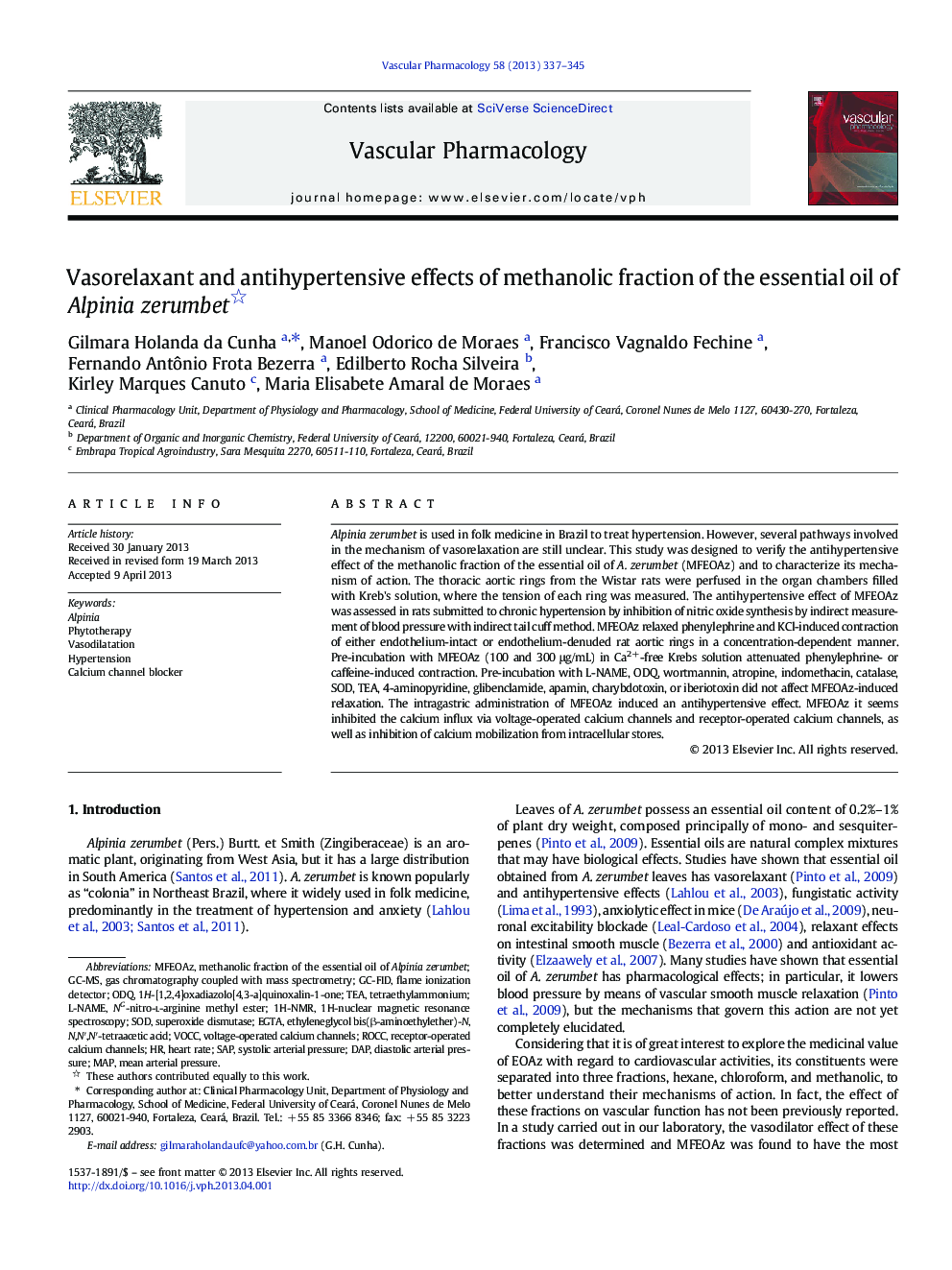| Article ID | Journal | Published Year | Pages | File Type |
|---|---|---|---|---|
| 2574366 | Vascular Pharmacology | 2013 | 9 Pages |
Alpinia zerumbet is used in folk medicine in Brazil to treat hypertension. However, several pathways involved in the mechanism of vasorelaxation are still unclear. This study was designed to verify the antihypertensive effect of the methanolic fraction of the essential oil of A. zerumbet (MFEOAz) and to characterize its mechanism of action. The thoracic aortic rings from the Wistar rats were perfused in the organ chambers filled with Kreb's solution, where the tension of each ring was measured. The antihypertensive effect of MFEOAz was assessed in rats submitted to chronic hypertension by inhibition of nitric oxide synthesis by indirect measurement of blood pressure with indirect tail cuff method. MFEOAz relaxed phenylephrine and KCl-induced contraction of either endothelium-intact or endothelium-denuded rat aortic rings in a concentration-dependent manner. Pre-incubation with MFEOAz (100 and 300 μg/mL) in Ca2 +-free Krebs solution attenuated phenylephrine- or caffeine-induced contraction. Pre-incubation with L-NAME, ODQ, wortmannin, atropine, indomethacin, catalase, SOD, TEA, 4-aminopyridine, glibenclamide, apamin, charybdotoxin, or iberiotoxin did not affect MFEOAz-induced relaxation. The intragastric administration of MFEOAz induced an antihypertensive effect. MFEOAz it seems inhibited the calcium influx via voltage-operated calcium channels and receptor-operated calcium channels, as well as inhibition of calcium mobilization from intracellular stores.
Graphical abstractFigure optionsDownload full-size imageDownload high-quality image (324 K)Download as PowerPoint slide
